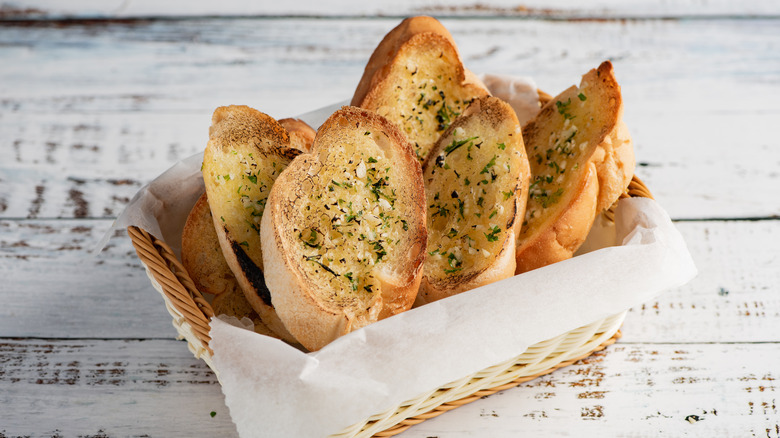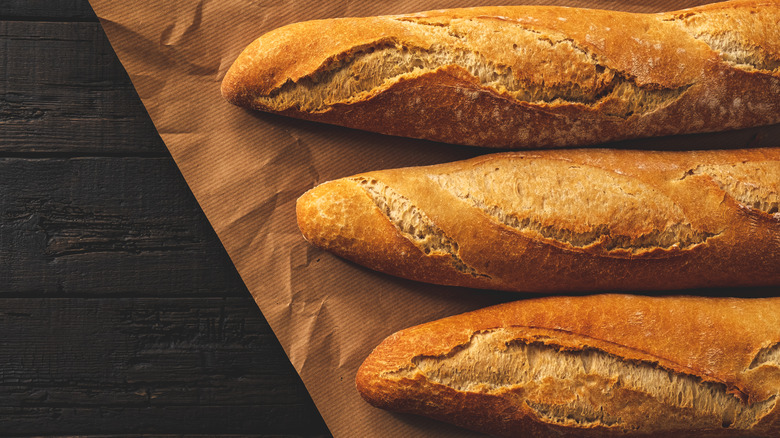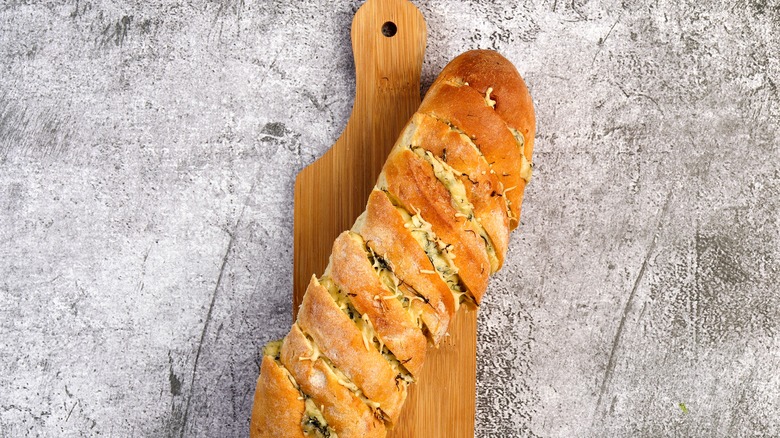The Step You Should Skip To Prevent Soggy Garlic Bread
Buttery, toasty garlic bread, especially when it's fresh out of the oven and perfectly warm, is one of those unmatched indulgences in life. However, while it's certainly a very simple appetizer or side dish to make, if you've prepared your own garlic bread before, you may have found that it can go from a toasty treat to a soggy snack very quickly.
If your garlic bread never turns out crispy, you might want to follow a piece of little-known advice: don't melt the butter called for in your recipe before spreading it on your bread. Adding already-melted butter to your pieces of bread can often result in a soggy texture because the bread absorbs too much moisture before going into the oven, which makes it much harder to achieve that crunchy, toasted top layer on each piece.
If you opt to use slightly softened butter instead, it will slowly and evenly seep into the bread's nooks and crannies as it bakes, and crisp up the top of the bread as it does so. That delightful crunch is key to good garlic bread, and softened butter will get you there more consistently than the completely melted kind.
What's the best bread to use for garlic bread?
Now you know what form of butter will produce the best results when you make garlic bread, but what about the star of the show? Garlic may provide most of the flavor in this beloved snack, but the bread is the foundation, and no amount of garlic and butter can completely mask a poor choice of bread. To choose the best bread for the job, go with a classic choice that has a crisp and crunchy texture already built into it.
If you've perused a few different garlic bread recipes before, you might have guessed that classic French bread is the winner. That's because most French bread has a soft and fluffy interior with a crusty exterior that still doesn't become too hard or tough after baking. This combination provides the perfect texture for garlic bread: soft and butter-soaked, yet crisp and crunchy.
Any loaf of bread labeled "French," whether it's a soft supermarket-baked loaf or a traditional baguette, will do the job well. And while there is a difference between French and Italian bread, Italian bread is generally similar in texture, so it also makes a great vehicle for garlic bread. You're better off staying away from softer, enriched breads like challah or brioche, or overly crusty loaves like sourdough.
Ways to level up your garlic bread
There's no denying that a good loaf of bread covered in butter, garlic, and herbs is sure to please the palate every time. But there are ways you can level up your garlic bread even more, or change up a few things for a different experience. For example, for crispy and creamy garlic bread, use mayo instead of butter. It'll compliment the garlic well with its own touch of tangy flavor, and its thick consistency will add an extra level of creaminess while also helping to produce a crispier final result.
Of course, you can always add cheese to your garlic bread for that ultimate gooey bite. Try mixing parmesan into your garlic butter for added flavor, layer on some mozzarella before baking for an epic cheese pull, or even stuff your garlic bread with a soft, melty cheese like Brie. You can also level things up with additional sauces and condiments like pesto, or by using roasted garlic instead of raw for a sweeter, richer flavor profile.



